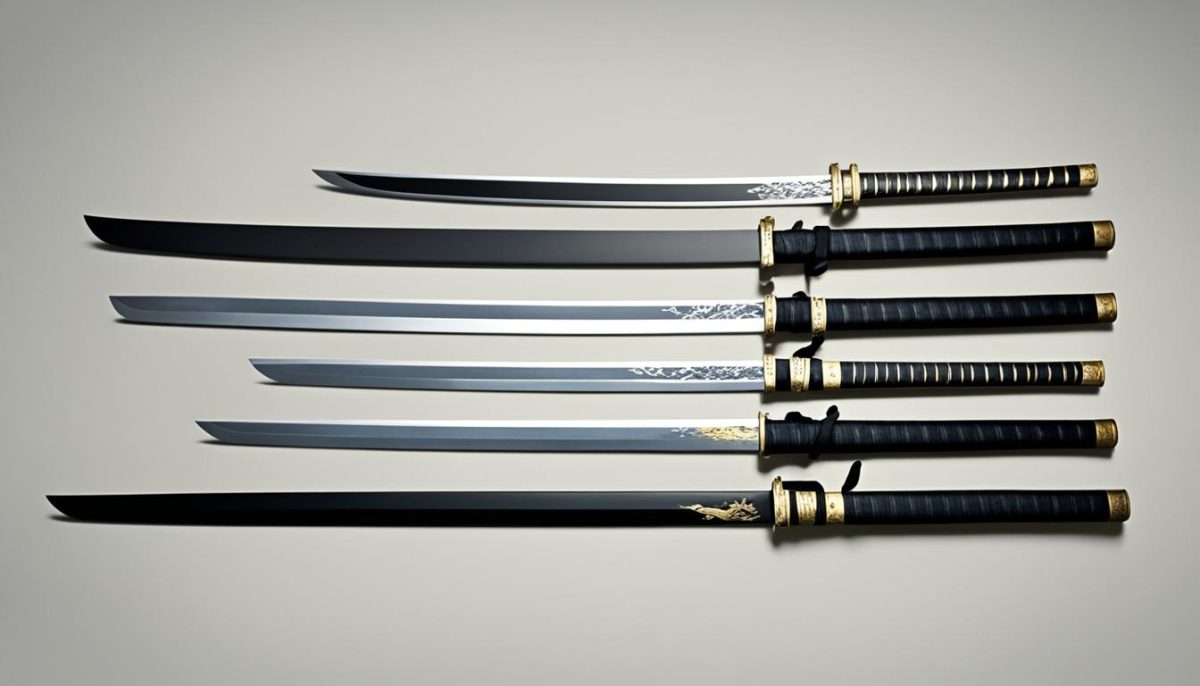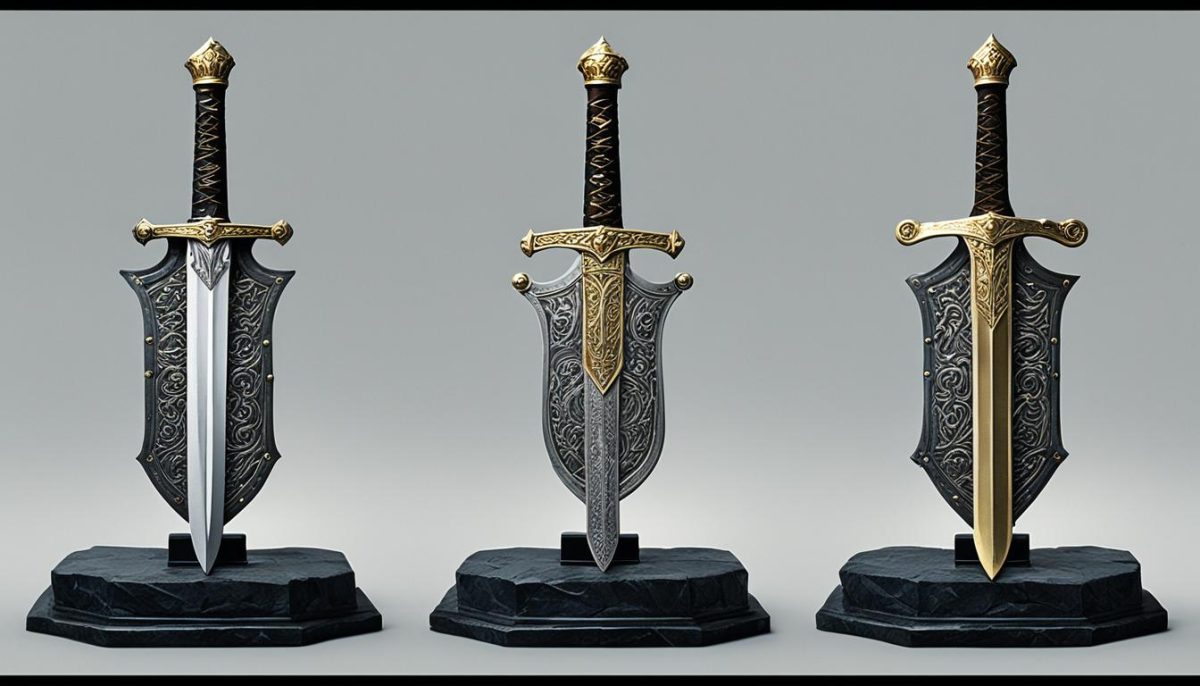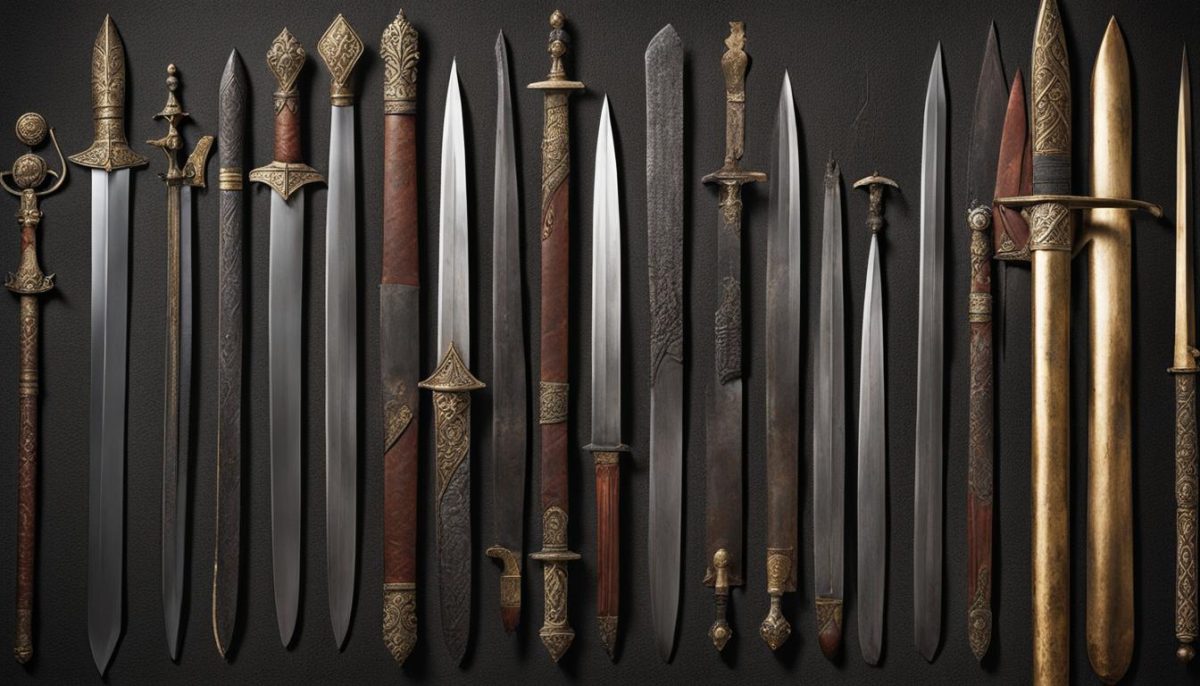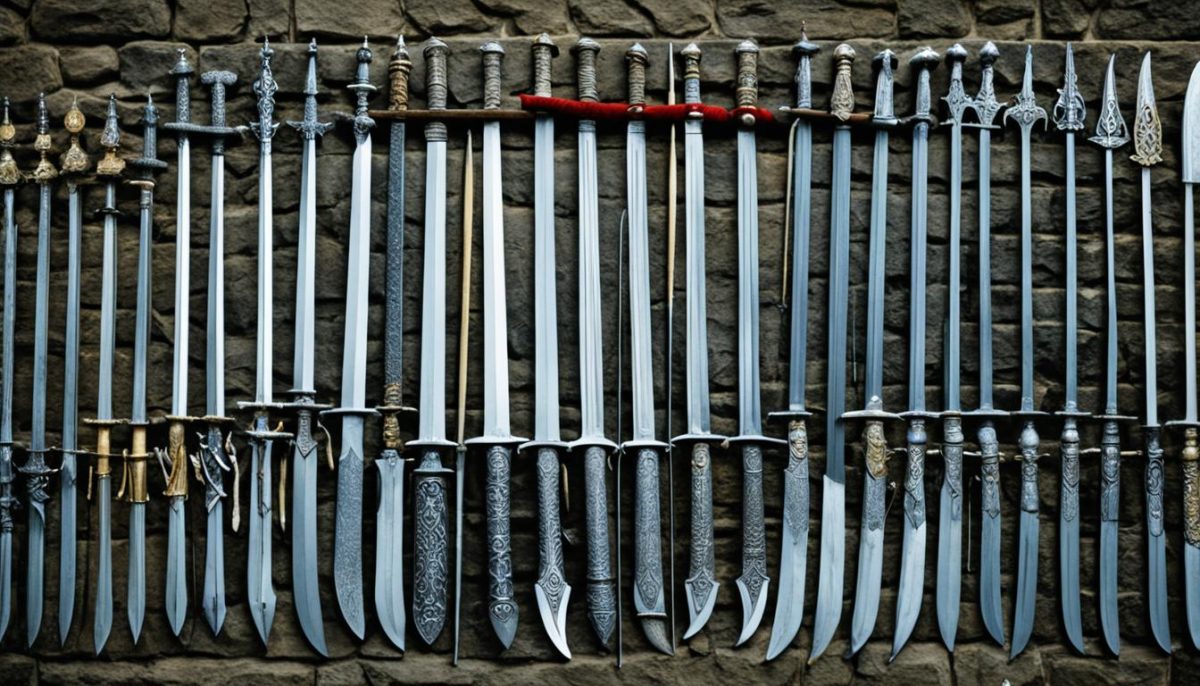For generations, swords have captivated the imaginations of people worldwide, embodying an elegance that transcends their utilitarian purpose as historic weaponry. Each sword, be it from the chivalric hands of medieval knights or the skilled warriors of the East, tells a story not just of battle, but of the artistry and technology of its time. The valid intrigue that surrounds sword dimensions – blade length, hilt size, and overall sword size – is not unfounded, as these aspects were crucial in the successful application of these revered arms in combat.
From the gleaming edges of a knight’s lofty broadsword to the precision of a duelist’s rapier, sword dimensions have been intricately tied to their role on the battlefield and within society. Diving into the essence of what makes swords enduring symbols of power and prestige, we embark on an enlightening journey through their varying sizes and the wisdom embodied within their blades.
Understanding Sword Length Through History
The tale of the sword is as much a chronicle of technological innovation as it is a saga of human conflict. Over millennia, sword evolution has been shaped by the merging streams of need, art, and science, leading to profound changes in weapon design among historical swords. A deeper look into blade evolution uncovers how these changes reflect broader societal transformations.
The Evolution of Sword Sizes
From the Bronze Age forges to the smithies of the modern world, the design and dimensions of swords have been in constant flux. Influenced by the availability of materials and advances in metallurgy, the length and shape of the blade evolved to meet the demands of the battlefield and the aspirations of its wielders.
Historical Significance and Variation
In different epochs, the length of a sword often signified the role and rank of its owner. A king’s ornate, lengthy blade symbolized power and commanded respect, while infantry might carry shorter, more practical weapons. This variation also mirrors the diverse tactics and martial disciplines of various cultures and time periods.
Common Types of Swords and Their Lengths
The historical tapestry of swords is vast and varied, with each type carrying its own story and specifications. Here are some of the renowned sword types alongside their typical lengths, illustrating the broad spectrum of weapon design changes throughout history:
| Sword Type | Culture/Region | Approx. Length |
|---|---|---|
| Gladius | Roman | 20-27 inches |
| Broadsword | Medieval Europe | 30-45 inches |
| Rapier | Renaissance Europe | 38-44 inches |
| Saber | Eastern Cultures | 30-40 inches |
We witness in this brief survey not only a weapon’s adaptation for efficiency but also its embodiment of cultural identity. The journey through the evolution of sword sizes draws a parallel line along the timeline of human progress, edged deeply with the strokes of evolving civilizations.
Different Sword Types and Their Measurements
Embarking on a journey through the diverse world of swords, one will encounter a myriad of types, each with its own unique characteristics and historical significance. The katana, with its sleek design and respected katana length, has been a symbol of the samurai culture. The claymore’s unmistakable silhouette, defined by its substantial claymore dimensions, evokes images of Scottish warriors. The rapier, slender and refined, boasts a rapier size that enabled swift and precise thrusts. Finally, the scimitar with its enduring scimitar blade length and curved form has been the pride of many a horseman in historical battlefields. Each measurement not only serves as a physical description but also tells a tale of the sword’s role in combat and ceremonial traditions.
| Sword Type | Length | Blade | Handle | Characteristic Use |
|---|---|---|---|---|
| Katana | 60-80 cm | Curved, single-edged | Long to accommodate two-handed use | Quick, precise cuts; Samurai warfare |
| Claymore | 120-140 cm | Straight, double-edged | Leather wrapped for strong grip | Powerful swings in Highland battles |
| Rapier | 104 cm average | Straight, slim thrusting blade | Complex hilts for hand protection | One on one dueling; self-defense |
| Scimitar | 75-90 cm | Curved, single-edged | Short, often with a crossguard | Cavalry charges; cutting slash |
In addition to the fundamental measurements, the balance between the blade and the handle and the overall craftsmanship define how a sword is wielded. Proportion and balance are vital, affecting both the wielder’s comfort and the weapon’s effectiveness. Whether on display or in practice, the intrinsic design qualities of these weapons hold a special place in the study and appreciation of martial weaponry.

The aesthetic achievement of these swords, each engineered for specific martial tactics, has transcended time. Their forms are not only critical in historical reenactments but also resonate with modern collectors and practitioners of the sword arts. The precise katana length, the formidable claymore dimensions, the subtle rapier size, and the sweeping scimitar blade length all continue to captivate and inspire, as they have for centuries.
How Long Swords Impact Martial Arts and Combat
In the realm of martial arts swordplay and combat, the length of a sword is a critical factor that influences not just the style of fighting, but the very effectiveness of a warrior’s techniques. This section will explore how the physical properties of a sword determine its role in combat and how sword fighters can maximize their prowess through understanding the nuances of sword balance, weight, and length.
Balance, Weight, and Length: A Fighter’s Triangle
For a practitioner of martial arts swordplay, achieving mastery starts with comprehending the fighter’s triangle—balance, weight, and length. The right combination allows for swift, precise movements, enabling combat techniques that can overcome an opponent’s defense. Let’s delve into the aspects that make a sword a true extension of a martial artist’s body.
- Sword Balance: A sword’s point of balance affects its maneuverability. The closer the balance point to the hilt, the quicker the sword can be wielded.
- Sword Weight: A heavier sword delivers powerful strikes but may sacrifice speed. Conversely, a lighter sword increases speed at the expense of impact.
- Sword Length: The length determines reach in combat, enabling a fighter to strike from a distance but also requiring more skill to control effectively.
The Reach Advantage: Strategy in Sword Fighting
Swords with longer blades confer a pivotal reach advantage, significant in both duels and large-scale battles. This advantage allows a combatant to maintain a distance while still threatening their opponent, a strategy that has been integral in the development of various sword fighting techniques.
A longer reach means the first to strike, often tilting the balance of a duel. Mastery of reach strategy is a hallmark of skilled swordsmen throughout history.
Training with Various Sword Lengths
Training across different sword lengths is not just beneficial, it’s imperative for a well-rounded martial artist. Understanding how each sword moves and reacts in the heat of battle refines both offensive and defensive skills, contributing to a versatile combat repertoire.
- Practicing with a short sword hones close combat abilities and quick blocks.
- Medium-length swords offer a balance of reach and agility, ideal for mixed techniques.
- Longer swords improve understanding of spacing and range control in swordplay.
Incorporating various swords into martial arts training builds not only physical dexterity but also strategic thinking, as each length presents unique challenges and opportunities.
Contemporary Sword Collecting: What Buyers Should Know
In the realm of sword collecting, enthusiasts are often drawn to the storied past of antique swords or the allure of finely crafted modern replicas. Each blade possesses its own narrative and significance, particularly when it comes to collectible sword lengths. As a collector, understanding the historical context of a sword’s design and its dimensions is essential for building a valued collection. Ensuring the authenticity of antique weapons and the precision of modern recreations is imperative, as these factors greatly influence a sword’s worth and collectability.
When adding to your collection, consider the practicalities of sword ownership. Proper storage and diligent maintenance are cornerstones of preserving the integrity and beauty of each piece. From climate-controlled environments to the use of oils and cloths suited for metal care, attention to detail will keep your swords in pristine condition for years to come. Moreover, as swordsmanship experiences a resurgence in popular culture, the craft of contemporary sword making has risen commensurately, often marrying traditional techniques with new materials, which in turn revitalizes interest in historical models and replicas.
For collectors eying the next addition to their arsenal, focus on quality and historical veracity. Take the time to research a sword’s provenance, if available, and authenticate its era and region of origin. In modern replicas, seek out craftsmen known for their adherence to historical specifications and quality workmanship. Whether you’re captivated by the exquisite lines of a katana or the robust strength of a broadsword, the right knowledge and a keen eye will guide you in curating a collection that is not only aesthetically pleasing but also rich in history and craftsmanship.


